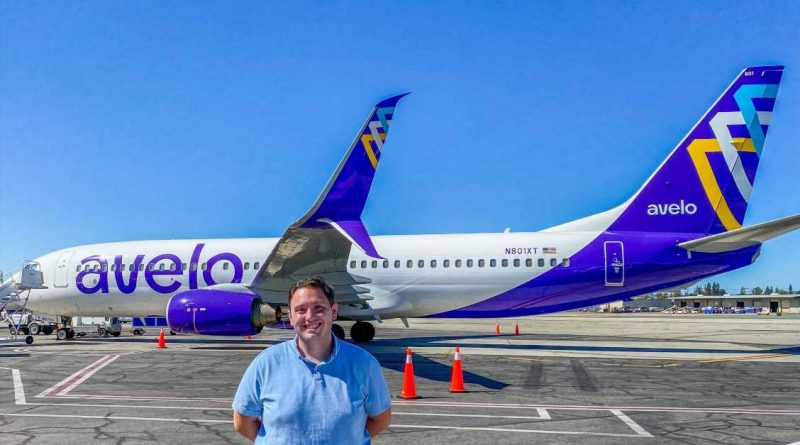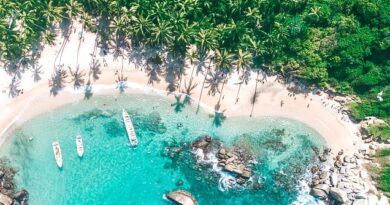I paid $19 to fly America's newest airline and had an amazing experience for dirt cheap. Here's what to know about flying Avelo.
- Avelo Airlines, America’s newest ultra-low-cost carrier, offers cheap flights to leisure destinations.
- It serves smaller airports near big cities that offer easier access but fewer amenities.
- There are extra fees for checked bags and seat assignments, but not much more.
- See more stories on Insider’s business page.
Avelo Airlines has slowly been introducing itself to the American traveling public as the carrier inaugurates its first 11 routes across the West Coast and Southwest.
Load Error
And with the airline preparing for an expansion to the East Coast by year’s end, more Americans will soon become acquainted with Avelo.
The carrier’s ultra-low-cost business model puts it on par with Allegiant Air, Spirit Airlines, and Frontier Airlines more so than Southwest Airlines or JetBlue Airways. But the airline, headed by Allegiant Air cofounder Andrew Levy, is taking a very different approach.
“Avelo’s purpose is to inspire travel and today we begin that process of making it easy, and convenient, and affordable with everyday low fares, for customers to be able to choose us,” Levy said ahead of the airline’s launch.
Read More: Spirit Airlines’ low-cost model puts it in the perfect spot to be the big winner of the pandemic, a Deutsche Bank analyst says
I flew on Avelo’s very first flight from Burbank to Santa Rosa in California and paid only $19 for the one-way fare. Naturally, I was expecting a similar experience to Spirit or Frontier but was wrong. What I found instead was a new breed of ultra-low-cost carrier with an incredibly unique offering.
Here’s what you need to know when booking a ticket on Avelo.
The airline won’t be found at larger airports
Convenience is at the heart of Avelo’s strategy, and that includes using smaller airports like Hollywood Burbank Airport in California, Phoenix-Mesa Gateway Airport in Arizona, or Tweed-New Haven Regional Airport in Connecticut. These airports are usually easier to get to, have cheaper parking rates, and fewer delays because there are fewer flights.
“We’re going to offer people a terrific deal and hopefully a really easy experience, very convenient, and a nice experience in terms of dealing with great people,” Levy told Insider.
They offer a more bare-bones experience compared to airports like Los Angeles International or John F. Kennedy International. That can be good or bad, depending on traveler preferences.
All three of the aforementioned airports feature single-story terminal buildings with very basic amenities. Passengers board and deplane from aircraft outdoors using ramps from the tarmac.
But smaller airports are often more convenient to access and move through.
Checking a bag is cheaper than carrying one on
Baggage fees are a top money-maker for airlines, especially ultra-low-cost carriers like Avelo. And while the airline charges for anything larger than a personal item, the fees are surprisingly low.
The fee for the first checked bag, for example, is only $10, while a carry-on bag will incur a standard rate of $35.
Levy says that lowering prices on checked bags will encourage more flyers to do so and free up space in the cabin. The result should be faster boarding and deplaning of the aircraft.
There are also fewer chances for bags to be lost since Avelo only offers direct flights with no connections.
Don’t expect to pay too many fees
Avelo is taking a different approach from its ultra-low-cost competitors by shunning most fees, including those to change a flight reservation. Most full-service US carriers have eliminated change fees, but they live on with the country’s ultra-low-cost carriers – except Avelo.
Gallery: I flew on JetBlue and Alaska 1 year into the pandemic and saw some of the best options for summer travel (Business Insider)
I flew on JetBlue and Alaska 1 year into the pandemic and saw some of the best options for summer travel
- JetBlue Airways and Alaska Airlines have taken similar approaches in returning to normal.
- Both have restored in-flight snack and drink services, board normally, and no longer block middle seats.
- But returning to normal doesn’t mean abandoning health and safety protocols, as I found on recent flights.
- See more stories on Insider’s business page.
JetBlue Airways and Alaska Airlines are mid-tier US carriers, sandwiched between the big four — American Airlines, Delta Air Lines, United Airlines, and Southwest Airlines — and the ultra-low-cost carriers.
JetBlue primarily serves the East Coast, with its main hub in New York, while Alaska serves the West Coast with its main hub in Seattle.
The two have rebounded quicker than most to pre-pandemic offerings, such as offering in-flight drinks and snacks, we well as normal boarding and seating procedures
But that doesn’t mean they aren’t still taking precautions to protect flyers.
I flew on both airlines in March on the way home from Seattle with a quick stop in Los Angeles to see how the two are handling the pandemic a year in.
The first flight of the day was on Alaska from Seattle to Los Angeles, one of the airline’s busiest routes. Seattle-Tacoma International Airport was among the busiest I had seen, but Alaska had a good setup of health and safety measures at check-in.
Hand sanitizer stations were scattered throughout the terminal and placed next to check-in kiosks.
Social distancing floor placards guided the path towards check-in desks, which were fitted with plexiglass partitions.
The only downside was that self-serve kiosks weren’t spaced and it seemed like I was right on top of the person checking in next to me.
Ticket in hand, I headed to the gate for the quick flight down the coast. The same setup that I had seen at check-in was also at the gate with more floor placards, plexiglass partitions, and hand sanitizer stations.
So far, I was impressed. Boarding then began and Alaska placards lined the jetway reminding passengers to social distance as they wait.
Alaska doesn’t board from the back of the plane to the front and normal boarding procedures applied. First class boarded first, and so on.
Flight attendants welcomed passengers onboard the aircraft but didn’t offer anything in the way of hand sanitizer or a sanitizing wipe, as others like United and Delta are.
But the aircraft was impeccably clean, so I wasn’t worried. This was also a brand-new Boeing 737 Max that had just been delivered to the airline, so I was expecting it to be clean since it had only flown a handful of flights.
Read More: I flew on an Alaska Airlines Boeing 737 Max weeks before it was grounded again — here’s what it was like
I did notice, however, that first class passengers were given sanitizing wipes at their seats. Economy passengers could request them.
My seat was 28F, a window seat in the back of the plane. And like the rest of the plane, it was spotless.
The tray table had no crumbs or stains whatsoever.
I was feeling very good about this flight and felt even better once boarded ended and my whole row was open. But in the interest of social distancing, a flight attendant put someone in the aisle seat so another row could have an open middle.
Alaska was previously blocking middle seats until January 7, the second-longest of any airline behind Delta. Flights can now be filled to capacity.
A pamphlet in the seat-back outlined Alaska’s onboard health and safety measures, which was a nice peace-of-mind reminder for skeptical passengers.
Flight attendants began the in-flight service shortly after takeoff, starting with a bag of snack mix.
But I was surprised to see the airline offering a choice of soft drink, as well. The cans are miniature but it’s better than nothing.
Flight attendants also distributed Purell wipes, and a reminder to wear a mask in between bites and sips was also printed on the napkin.
The rest of the flight continued uneventfully, with most passengers abiding by the mask rule. I didn’t see any passengers receive Alaska’s dreaded “yellow card.”
Read More: See the yellow card Alaska Airlines will give to passengers who refuse to wear masks on its flights
Alaska isn’t afraid to ban flyers for not wearing masks and its most recent count is 467 passengers banned, as of April 1.
Finally, we landed in Los Angeles. Alaska did a great job at keeping us safe, from what I saw.
But as we deplaned, passengers all social distancing measures went out the window, despite a reminder to mind our distance from flight attendants after we landed.
After a few hours in Los Angeles, it was time to fly home to New York on JetBlue.
Read More: I visited the newly designed private terminal at LAX and saw why wealthy travelers are spending thousands for a membership
Los Angeles is a hub for JetBlue but the airline doesn’t nearly have as much space as Alaska does in Seattle. There were still plenty of protocols in place for social distancing, including floor placards, plexiglass partitions, and signage reminding travelers to wear masks.
Even the check-in kiosks were staggered and had floor placards with distancing reminders.
There were hand-sanitizing stations by the checked bag drop point.
The gate had similar measures, but no sanitizing stations.
JetBlue had stopped back-to-front boarding earlier in the month, so the normal boarding procedure was followed. The airport had installed social distancing reminders in the jetway, as well.
Flight attendants welcomed us onboard but did not offer any sanitizing wipes or hand sanitizer. I later found out that they were available but only on request.
But, as with Alaska, the aircraft was impeccably clean and I wasn’t concerned at all.
This overnight flight to New York was moderately full but empty enough that most aisles had the middle seat open. JetBlue stopped blocking middle seats in October.
My seat was 25A, a window seat towards the back of the plane.
It was spotless and completely free of stains or crumbs, a great sign for the flight ahead.
All JetBlue planes have seat-back entertainment screens, and they’re being put to good use during the pandemic with new messaging on the airline’s health and safety measures.
There was a “dos and don’ts” on what to do when flying JetBlue, including when to wear a mask and when it can be taken off.
And there were reminders not to crowd aisles.
We took off into the Los Angeles night, bound for New York, and flight attendants quickly started the in-flight snack and drink service.
A full selection of full-size soft drinks were on offer…
As well as JetBlue’s famous snacks.
The rest of the flight continued smoothly, and soon enough, it was time to land in New York.
Just like with Alaska, other passengers’ desire to get off the plane was greater than the desire to social distance.
But while walking through Terminal 5, primarily used by JetBlue, I saw more of the airline’s safety features. First, social distancing placards in the jetway…
…and a hand sanitizer station in the gate area…
Automated boarding gates…
And blocked off seats.
It was an impressive setup, on par with Alaska’s in Seattle.
Customers will not have to pay a fee to change a flight. They’ll only have to pay the fare difference.
“As far as change fees are concerned, I think that’s one of the biggest pain points in the airline industry,” Levy said. “It’s been that way for years. Airlines for years have used that as a money grab, and it has no relationship to what it truly costs to manage a change.”
Another fee that Avelo is shunning is the call center fee. Customers that call to make a new reservation or make a change won’t be penalized for doing so.
“I want you to be treated kindly, and I want us to be able to make a difference and differentiate ourselves by providing a great experience engaging with customers on the phone,” Levy said.
To pay for a seat or not to pay for a seat
I never pay extra for seat assignments when I flew on ultra-low-cost carriers, and I’ve almost always been assigned an aisle or window seat as a result. Case in point: I didn’t pay for a seat on my Avelo flight as was assigned 14F, a window seat towards the front of the plane.
The difference on Avelo, however, is that aisle and window seats start at $5, so the investment is minimal.
Flyers can take a risk by not selecting a seat and may be assigned a good seat. But the option for a $5 window or aisle seat is a good way for flyers to avoid a middle seat without breaking the bank.
The cheapest seats are $4 but since those are for middle seats in the back of the plane. Those are already the worst possible seats on the plane and flyers are better off spending the extra dollar, or taking a risk by not paying for a seat at all.
Snacks and drinks are free
Avelo doesn’t currently offer a full in-flight snack and drinks service due to the pandemic, but the airline does distribute what it calls “convenience packages.” Inside the sealed package is a water bottle, a package of shortbread cookies, and a Purell wipe.
It’s not much, but Avelo’s flights are typically less than two hours in duration, and outside food can be brought on the plane if it clears TSA screening.
Not all seats are the same, but they do recline
Seats onboard Avelo’s Boeing 737s vary based on legroom, as is the case on all ultra-low-cost carriers. The cheapest and seats offer 29 inches of legroom while more expensive seats between 31 and 38 inches of legroom.
The price for each seat depends on how much legroom the section it’s in offers. The first row of the cabin offers nearly unlimited legroom and the next comparable seats are the exit rows.
Seats also recline, which is rare for an ultra-low-cost carrier that offers minimal legroom in some sections. Another unique perk is that seats come with a proper tray table, unlike Spirit and Frontier, with ample room to hold drinks and food.
There’s no first-class cabin.
There’s no TSA PreCheck, yet
Avelo is not on the Transportation Security Administration’s list of participating airlines for the PreCheck program, meaning all passengers will have to endure traditional security checks. The good news is that Avelo primarily serves smaller airports where lines for security checkpoints are often shorter.
But even then, travelers will still have to take off their shoes and remove laptops from their bags.
Avelo is coming soon to the East Coast
Avelo just announced expansion plans for the East Coast that will see a base in New Haven, Connecticut at Tweed-New Haven Regional Airport. The first routes have not yet been announced but flights across the East Coast are planned.
Moving into New Haven required a $100 million modernization plan, of which $1.2 million is being funded by Avelo, to extend the airport’s runway and enhance its terminal building. The first flights will depart by year’s end.
Source: Read Full Article
























































